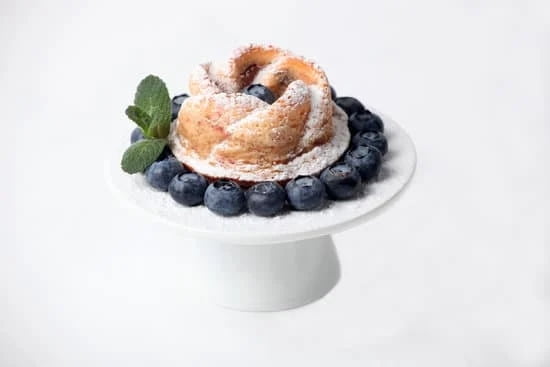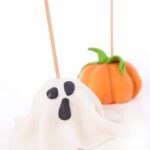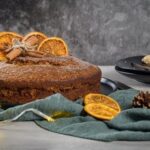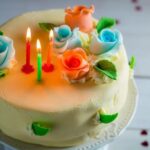Cake decorating flowers add an elegant and delicate touch to any cake, turning a simple dessert into a work of art. Whether you are a beginner or an experienced baker, learning the art of creating edible flowers with icing can elevate your cake designs to the next level.
In this article, we will explore the different types of edible flowers used in cake decorating, provide tips for realistic flower creations, discuss essential tools and supplies needed, and offer step-by-step tutorials for both basic and advanced techniques.
Using edible flowers in cake decorating allows you to customize your creations with vibrant colors and exquisite details. From simple buttercream flowers to intricate fondant designs, the possibilities are endless. Mastering the art of creating lifelike flowers out of icing requires practice, patience, and a little bit of creativity. With the right techniques and knowledge, you can transform your cakes into stunning floral arrangements that are almost too beautiful to eat.
Whether you are looking to create a basic buttercream flower or enhance your skills with advanced techniques, this guide will provide you with everything you need to know about cake decorating flowers. From choosing the right types of edible flowers to troubleshooting common issues, we will cover all aspects of incorporating floral elements into your cake designs. So, let’s delve into the world of edible flower decorations and discover the beauty they can bring to your cakes.
Types of Edible Flowers for Cake Decorating
When it comes to cake decorating flowers, using edible flowers can take your designs to the next level. There are several types of edible flowers that are perfect for adorning cakes and adding a touch of natural beauty. Some popular choices for edible flowers include roses, violets, pansies, lavender, and hibiscus. These flowers not only add visual appeal to your cakes but also offer unique flavors and aromas.
It’s important to note that not all flowers are safe for consumption, so it’s crucial to do thorough research before using any flower for cake decorating. Make sure the flowers you use are organic and have not been treated with any chemicals or pesticides. Additionally, some people may have allergies to certain types of flowers, so it’s essential to consider your guests’ dietary restrictions when choosing edible flowers for cake decorating.
| Edible Flower | Flavor Profile |
|---|---|
| Roses | Sweet and floral |
| Violets | Slightly sweet with a hint of wintergreen flavor |
| Pansies | Mild, fresh flavor similar to lettuce or wintergreen |
| Lavender | Fragrant with a slightly sweet and citrus flavor |
These are just a few examples of the many edible flowers that can be used in cake decorating. Experimenting with different edible flowers can lead to stunning and delicious results in your cake designs.
When using fresh edible flowers on cakes, ensure that they are clean and free from dirt or insects. It’s best to place them on the cake just before serving to maintain their freshness and appearance. With a little creativity and careful consideration, incorporating edible flowers into your cake decorating repertoire can elevate your creations to new heights.
Tips for Creating Realistic Flowers With Icing
When it comes to cake decorating, creating realistic flowers with icing is an essential skill that can take your creations to the next level. Whether you’re a beginner or an experienced baker, perfecting the art of icing flowers can elevate the visual appeal of your cakes. Here are some valuable tips to help you achieve lifelike floral designs with icing.
First and foremost, it’s crucial to choose the right consistency for your buttercream or royal icing. The ideal texture for piping flowers is one that holds its shape without being too stiff or too runny. Practice adjusting your icing consistency until you find the perfect balance for creating delicate petals and intricate details.
Another important tip for creating realistic flowers with icing is to study real flowers for inspiration. Take note of the unique shapes, textures, and color variations present in different types of flowers. By observing nature, you can better understand how to replicate these elements in your icing designs.
Furthermore, using the right piping tips is essential for achieving a variety of flower shapes and petal styles. Large round tips are suitable for creating roses, while smaller round tips work well for daisies and other simple blooms. Leaf tips can be utilized to add foliage and greenery to your floral arrangements.
| Tip | Description |
|---|---|
| Choosing Icing Consistency | Finding the right balance between stiff and runny icing is crucial for creating realistic flower designs. |
| Studying Real Flowers | Observing real flowers can provide insight into their unique shapes, textures, and colors, which can be replicated in icing designs. |
| Using the Right Piping Tips | Selecting appropriate piping tips allows for the creation of various flower shapes and petal styles. |
Tools and Supplies Needed for Cake Decorating Flowers
Cake decorating flowers are a beautiful and elegant way to make any cake stand out. However, in order to create these stunning floral designs, it is essential to have the right tools and supplies on hand. Here is a list of some basic and advanced items you will need to successfully decorate your cakes with edible flowers:
- Piping Bags: These are essential for piping frosting or royal icing to create the intricate details of the flowers.
- Piping Tips: Different tips will create different shapes and textures for your flowers. Some popular tips for creating floral designs include the petal tip, round tip, and leaf tip.
- Frosting or Icing: Whether you prefer buttercream, royal icing, or fondant, having a good quality frosting or icing is crucial for creating realistic flower designs.
- Food Coloring: While some flowers can be piped in white or off-white, having food coloring on hand will allow you to create an array of colorful blossoms.
To take your cake decorating skills to the next level, consider investing in these advanced tools:
- Flower Nail: This small metal tool allows you to easily rotate and pipe intricate flower petals without smudging the design.
- Gum Paste or Fondant: For more intricate and detailed flower designs, gum paste or fondant can be molded into lifelike blossoms that dry hard for long-lasting decorations.
- Edible Lustre Dust: This shimmering powder adds a touch of elegance to your floral decorations by providing a metallic finish.
With these tools and supplies in your arsenal, you’ll be well-equipped to bring your cake decorating flowers to life with stunning detail and realism.
Whether you’re an experienced baker or just starting out in the world of cake decorating flowers, having the right tools and supplies is essential for success. With proper equipment and practice, you can create beautiful edible flowers that will elevate any cake design from ordinary to extraordinary.
Step-by-Step Tutorial
Creating beautiful buttercream flowers is a key skill for any cake decorator. Whether you are a beginner or an experienced baker, mastering the art of creating realistic and stunning buttercream flowers can take your cake decorating to the next level. In this section, we will provide a step-by-step tutorial for creating a basic buttercream flower that will impress your friends and clients.
To get started, you’ll need the following tools and supplies:
- Piping bags
- Flower nail
- Parchment paper squares
- Buttercream frosting in various colors
- Round piping tips in different sizes
Now, follow these steps to create a basic buttercream flower:
- Prepare your piping bags with different colored buttercream frosting and attach the round piping tip to each.
- Place a parchment paper square on the flower nail and pipe a small dot of icing in the center as the starting point for your flower.
- Using a swirling motion, pipe petals around the center dot, working from the inside out.
- Add as many layers of petals as desired to create a full and blooming flower.
Practice makes perfect when it comes to creating buttercream flowers. Don’t be discouraged if your first attempts don’t turn out perfectly. With time and patience, you’ll soon be able to create stunning cake decorating flowers that will amaze everyone who sees them. Whether you’re making a simple birthday cake or an elaborate wedding cake, adding beautiful edible flowers will elevate your creations to a whole new level.
Advanced Techniques for Cake Decorating Flowers
After mastering the basics of cake decorating flowers, many bakers and decorators may want to explore advanced techniques to take their edible floral creations to the next level. Whether it’s for a special occasion or simply to add a touch of artistry to your baked goods, there are several advanced techniques that can elevate your cake decorating skills.
One advanced technique for creating cake decorating flowers is using gum paste or fondant. These sugar-based mediums allow decorators to sculpt intricate and delicate flower petals and shapes with more precision than traditional buttercream icing. With the right tools and techniques, decorators can create lifelike roses, peonies, and other elaborate floral designs that can be showcased on cakes for weddings, birthdays, and other celebrations.
Another advanced technique for cake decorating flowers is the use of airbrushing. This method allows decorators to add depth, shading, and detail to their floral creations with the use of edible food color sprays. Airbrushing can bring a sense of realism to edible flowers, enhancing their visual appeal and making them stand out as stunning focal points on cakes.
For those interested in pushing the boundaries of their cake decorating skills, incorporating sculpted elements such as sugar flower branches, leaves, or intricate flower centers can add complexity and artistry to floral designs. These advanced techniques require practice and patience but can result in breathtakingly beautiful cake decorations that truly showcase the art of cake decorating flowers.
Incorporating Fresh Flowers Into Cake Designs
Fresh flowers can add a beautiful and natural touch to cake designs, elevating the overall look and creating a stunning focal point. When incorporating fresh flowers into cake decorating, it’s important to consider the type of flowers being used, how they will be arranged on the cake, and ensuring they are safe for consumption.
Choosing the Right Flowers
Not all flowers are safe for consumption, so it’s crucial to select the right blooms for decorating cakes. Opt for organic, pesticide-free flowers that are food-safe such as roses, violets, pansies, lavender, or chamomile. It’s important to avoid toxic flowers such as daffodils, foxglove, or lily of the valley as they can be harmful if ingested.
Preparation and Placement
Before incorporating fresh flowers into cake designs, it’s essential to prepare the blooms properly. Gently wash and dry the flowers to remove any dirt or chemicals. Trim the stems to an appropriate length and insert them into food-safe floral picks or wrap them in floral tape before inserting them into the cake. When arranging the fresh flowers on the cake, consider the overall design and placement to ensure a visually appealing result.
Safety Considerations
When using fresh flowers in cake decorating, it’s crucial to consider food safety. Make sure that any non-edible parts of the flowers do not come into direct contact with the cake itself by using barriers such as parchment paper or fondant wraps. Additionally, communicate with clients about any potential allergies when using fresh flowers in their cake designs and always inform them which parts of the cake are safe for consumption.
Troubleshooting
Cracking or Breaking
One common issue when creating cake decorating flowers is that they can crack or break easily. This can be due to the icing being too dry or the petals being too thin. To prevent this, make sure to use a good quality, pliable icing and roll it out to the right thickness. Additionally, handle the flowers delicately when placing them on the cake to avoid any breakage.
Color Bleeding
Another issue that may arise when using cake decorating flowers is color bleeding. This happens when the colors from one flower bleed onto another, resulting in a messy and unattractive appearance. To prevent color bleeding, make sure to let each layer of icing dry completely before adding another color on top. You can also use gel-based food coloring instead of liquid-based ones, as they are less likely to bleed into each other.
Lack of Realism
Creating realistic-looking cake decorating flowers can be a challenge for some bakers. One common issue is that the flowers end up looking flat and unrealistic. To achieve a more three-dimensional look, try adding layers of petals with varying shades of color and use different piping tips for texture. It’s also helpful to study real flowers and observe their natural shapes and colors in order to replicate them accurately in your designs.
By troubleshooting these common issues with cake decorating flowers, you can improve your skills and create stunning floral designs that will elevate your cake decorating game. With practice and attention to detail, you’ll be able to overcome these challenges and produce beautiful, lifelike flowers that will impress your clients or guests at any event.
Conclusion
In conclusion, the art of cake decorating with flowers has been a time-honored tradition that continues to bring beauty and elegance to any special occasion. Whether you are a novice or an experienced baker, incorporating edible flowers into your cake designs adds a touch of natural charm and sophistication. By using a variety of edible blooms such as roses, violets, or pansies, you can create stunning floral arrangements that are not only visually appealing but also delicious.
As we have explored in this article, there are numerous types of edible flowers that can be used for cake decorating, ranging from delicate petals to vibrant blossoms. With the right tools and techniques, it is possible to create realistic flower designs using icing or frosting. Additionally, incorporating fresh flowers into cake designs can add a delightful fragrance and natural flair to your creations.
While creating cake decorating flowers may come with its challenges, the end result is undoubtedly worth the effort. From mastering basic buttercream flower techniques to exploring advanced methods, the possibilities for creating beautiful floral designs are endless. So whether you are creating a simple birthday cake or an elaborate wedding confection, consider adding the beauty of edible flowers to elevate your cake decorating skills and impress your guests with stunning floral creations.
Frequently Asked Questions
What Kind of Flowers to Use for Cake Decorating?
When it comes to cake decorating, it’s important to choose flowers that are safe for consumption. Edible flowers like roses, violets, and chamomile are popular choices. It’s crucial to ensure that the flowers are free from pesticides and other harmful chemicals.
Is It Safe to Decorate a Cake With Fresh Flowers?
Decorating a cake with fresh flowers can be safe as long as certain precautions are taken. The flowers should be organic and pesticide-free. Additionally, they should be washed thoroughly before being used on the cake to remove any dirt or potential contaminants.
How to Make Decorative Flowers for Cakes?
Making decorative flowers for cakes can be a fun and creative process. One popular method is using fondant or gum paste to create intricate flower designs. Using flower molds, shaping petals by hand, and adding color with edible food coloring can result in beautiful floral decorations for cakes.
Another technique involves piping buttercream or royal icing into floral designs directly onto the cake. Both methods require practice and patience but can produce stunning results for cake decorating.

Welcome to our cake decorating blog! My name is Destiny Flores, and I am the proud owner of a cake decorating business named Cake Karma. Our mission is to provide delicious, beautiful cakes for all occasions. We specialize in creating custom cakes that are tailored specifically to each customer’s individual needs and tastes.





